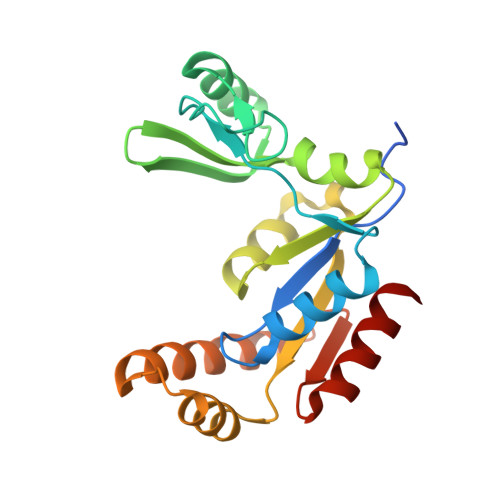Conversion of the enzyme guanylate kinase into a mitotic-spindle orienting protein by a single mutation that inhibits GMP-induced closing.
Johnston, C.A., Whitney, D.S., Volkman, B.F., Doe, C.Q., Prehoda, K.E.(2011) Proc Natl Acad Sci U S A 108: E973-E978
- PubMed: 21990344
- DOI: https://doi.org/10.1073/pnas.1104365108
- Primary Citation of Related Structures:
4F4J - PubMed Abstract:
New protein functions can require complex sequence changes, but the minimal path is not well understood. The guanylate kinase enzyme (GK(enz)), which catalyzes phosphotransfer from ATP to GMP, evolved into the GK domain (GK(dom)), a protein-binding domain found in membrane associate guanylate kinases that function in mitotic spindle orientation and cell adhesion. Using an induced polarity assay for GK(dom) function, we show that a single serine to proline mutation is sufficient to switch extant GK(enz) into a functional GK(dom). The mutation blocks catalysis (GK(enz) function) but allows protein binding and spindle orientation (GK(dom) function). Furthermore, whereas the GK(enz) undergoes a large closing motion upon GMP binding, fluorescence quenching and NMR demonstrate that the S → P mutation inhibits GMP-induced GK movements. Disrupting GK closing with a mutation at a different position also leads to GK(dom) function, suggesting that blocking the GK(enz) closing motion is sufficient for functional conversion of GK(enz) to GK(dom). Although subtle changes in protein function can require complex sequence paths, our work shows that entirely new functions can arise from single mutations that alter protein dynamics.
- Institute of Molecular Biology, Department of Chemistry, University of Oregon, Eugene, OR 97403, USA.
Organizational Affiliation:

















